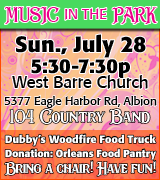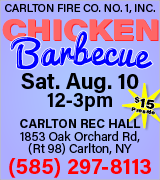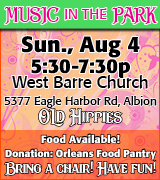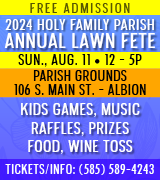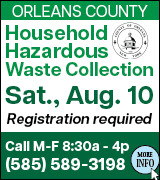Yates Academy was thriving center of learning in Lyndonville
In 47 years school served more than 2,000 students
By Catherine Cooper, Orleans County Historian
Illuminating Orleans – Vol. 2, No. 12
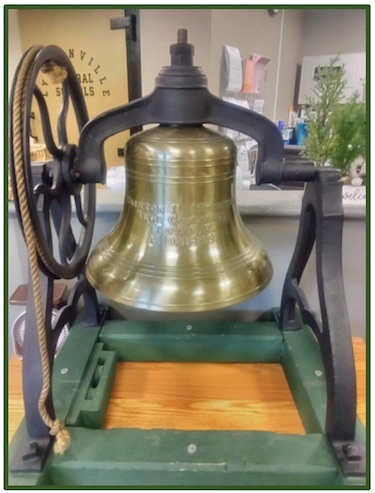
Photo of bell from Yates Academy courtesy of the Lyndonville Central School District.
YATES – The sonorous sounds of this brass bell sounded out across the quiet countryside of the Town of Yates, summoning boisterous students to the renowned Yates Academy, or sounding the end of class.
Now housed in the entrance hall of the Lyndonville Elementary School, it is a tangible reminder of that once thriving seat of learning which was located north of the village of Lyndonville, on the west side of Route 63.
In the early 1800s, district schools offered grade school education. Secondary level education was provided by privately owned, fee-paying schools, known as academies.
The first Academy in the county was established in Gaines in 1827. Subsequently, academies were established in Albion, Millville, Medina and Holley.
Peter Saxe, a merchant originally from Vermont, is credited with the establishment of the Yates Academy in the Town of Yates. He assembled a Board of Trustees, solicited subscriptions, and laid the plans for the building which was constructed in 1841 of locally hewn wood.
The Yates Academy was incorporated by the New York State Board of Regents in August of 1842. Members of the first Board of Trustees included: Peter Saxe, Thomas Jewett, Richard Barry, James Parmelee, John L. Lewis, B.H. Gilbert, Gen. Grosvenor Daniels, James Lum, Chester Brost, Joel Parsons, Warren Chase and Joseph Cady.
The school proved popular from the beginning. Enrollment the first year was 161 – 81 female students and 80 male. By the fourth year, enrollment had reached 338.
Most students were from Orleans or neighboring counties, but there were also some from Vermont, New York City, Michigan and Canada. They were housed in a nearby boarding-house which was run by the teachers. Some students boarded with local families with boarding cost $1.25 to $1.50 per week.
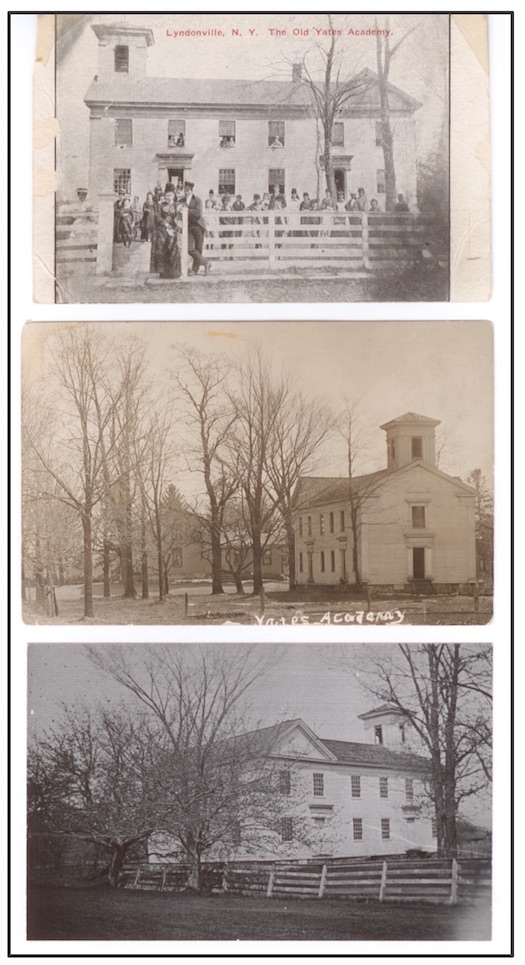
Postcard images of the Yates Academy
The academic year consisted of three terms of 14 weeks each. Tuition costs varied from $3 to $6, depending on the courses taken. Courses such as music, oil painting, etc. cost extra.
The Academy’s library housed some 500 books and the science laboratory was well equipped.
It was an ambitious undertaking. The logistics of providing food, fuel and furnishings for staff and students must have been a challenge. In addition, the staff were responsible for the physical and moral welfare of the students.
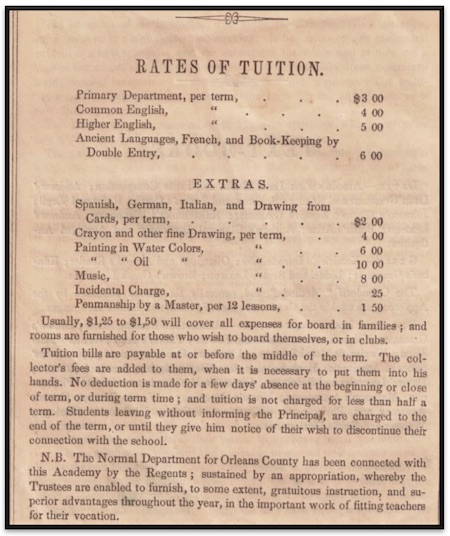
Tuition rates from the 1853 Academy catalog
The teachers were suitably accomplished. Prof. Charles Fairman taught ancient languages, mathematics and German. His wife taught modern languages, English, drawing and painting. Algernon Shattuck of Medina, who wrote textbooks on the Spencerian form of handwriting, instructed students in that then highly regarded skill.
Students were prepared for college or for becoming teachers. The Academy’s philosophy was that the purpose of education was not the storage of facts, but the development of one’s power of reasoning. “Composition” and “Declamation” – essay writing and public speaking were emphasized. Students were encouraged to be aware of their future roles as responsible citizens. Many pursued successful careers as lawyers and politicians.
One can imagine that the addition of over one hundred lively teenage secondary school students must have greatly enlivened the surrounding rural area. Students would have been visible each day as they walked to and from school and on Sundays as they attended obligatory religious services. There would have been a flurry of horses and buggies at the beginning and ending of each term when students were dropped off or picked up.
The Union School Act of 1853 signaled the beginning of the end for the private academies. The legislation allowed the formation of locally funded school districts comprised of several elementary schools and one high school, thus students could attend a public local high school.
Enrollment at the Yates Academy declined and it closed in 1889, having provided an excellent standard of education for 47 years to over two thousand students.
The building stood abandoned for several years. It was dismantled in 1916 and all but the pillars and roof were transported by rail to Johnson City in Broome County and used in the construction of a dormitory at the Practical Bible Training School.
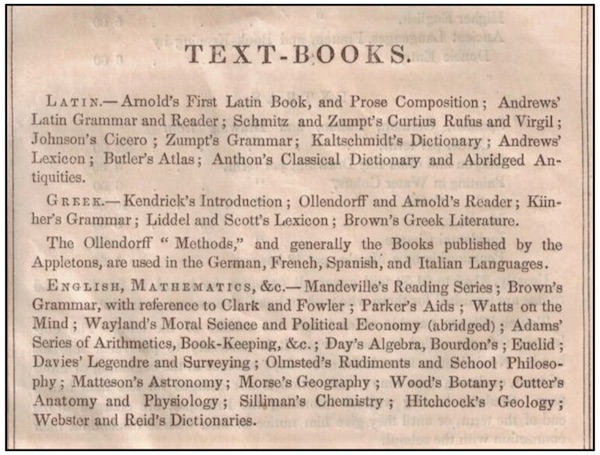
Textbooks used at the Yates Academy
According to an article in the Johnston City Record of Feb. 26, Rev. S.S. Lewis, then pastor of the Yates Baptist Church, was a past pupil of the Bible School. He informed John A. Davis, President of the Bible School of the Academy building and its illustrious past.
Under the terms of the deed, the school building reverted to the original owners when it was no longer used. The heirs, Mrs. Mary P. Davison and Miss Elmira Davison, readily consented to allowing the school to be dismantled and reused for this purpose.
“The timbers were in a fine state of preservation, all the framing being massive and put together with pins. Few nails were used in the structure and for that reason little harm was done to the timbers in dismantling it.”
The Bible Training School has since expanded, it is now known as Davis College. Its website indicates that new and modern facilities have replaced the original buildings.




















